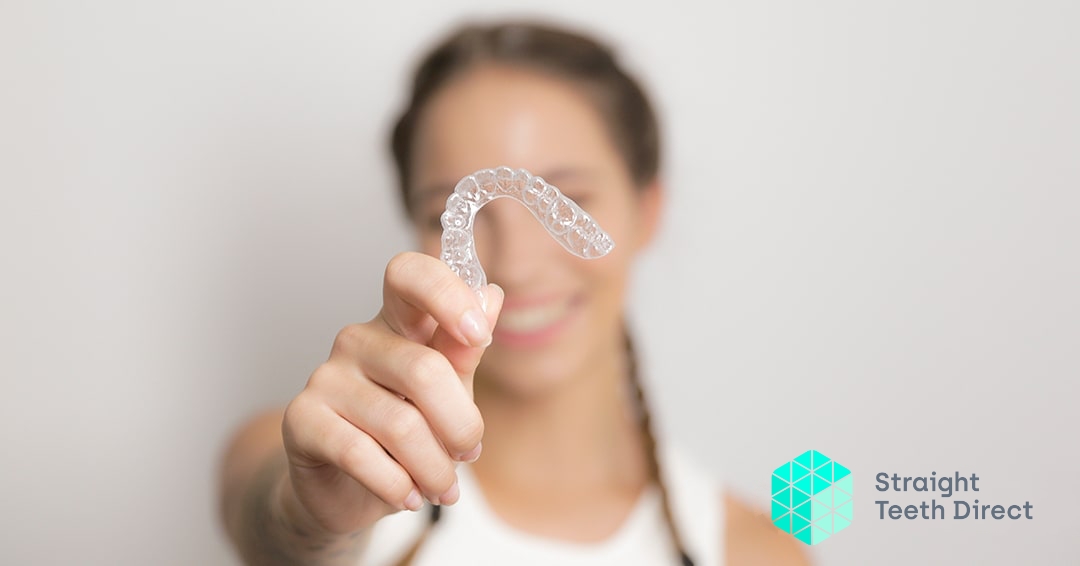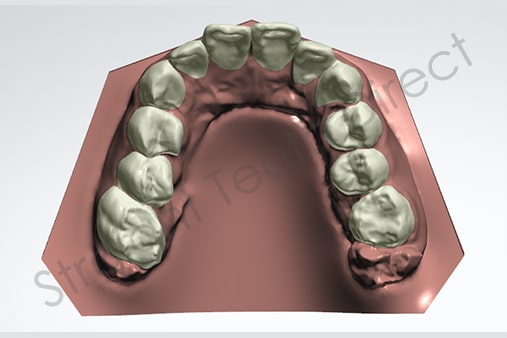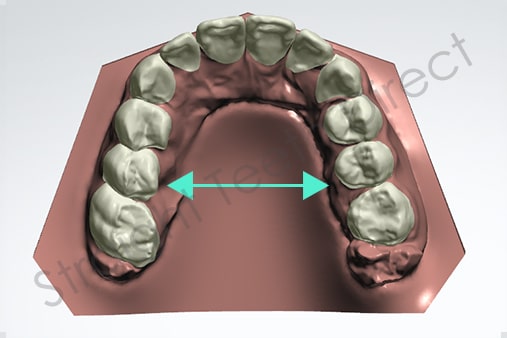
Braces movement – how aligners work compared with fixed braces

Aligners are clearly the future. They allow people to straighten their teeth without lifestyle or eating constraints, meal restrictions because of braces, you can get straight teeth on your terms. But how exactly does it work to move the teeth compared with fixed braces? And how can it work without a dentist extracting teeth or doing IPR smoothing between the teeth? Let’s find out more about braces movement.
1# Braces movement with fixed braces vs. aligners
Teeth move in response to any constant force. It could be your tongue, sucking your thumb, pressure from a finger or any type of brace. The tooth will move if the duration of the force exceeds 15 hours a day.
So how do aligners work? Are they as good as metal braces? Many dentists prefer metal braces as they are used to them and they cost the clinic less in lab fees, but lets talk about effectiveness, first let’s understand how they work.
1. Fixed braces movement
With metal train track braces, they work by having two components: the bracket and the wire.
The bracket through its glue grips the tooth and anywhere the bracket moves the tooth will follow.
2. Aligner braces movement
So how does an aligner work? There is no bracket and there is no wire.
The aligner works because of the elastic properties of the special BPA free plastic it is made from.
This plastic is rigid and can fit the teeth well, but it is also slightly flexible and this is where the magic happens. The aligner is made on a specially designed 3D printed model.
This model is not exactly as the mouth is now. It is with the teeth in a slightly different position – approximately 0.2mm different. This means the teeth have been moved into different positions as part of a staged plan to straighten the teeth. In one plan there may be 15-25 models needed as intermediate steps to straighten the teeth out.
So the aligner then is made on the model with slightly straighter teeth. When the aligner is then pushed into position it feels very tight.
This tightness is due to two factors.
This is why they should be worn for about 22 hours a day for 2 weeks each as by that time the aligner will be coming in and out without pressure and the teeth will now be in the new position, so a new aligner can then be put in place which has a new position about 0.2mm ahead of the current position. This is how the teeth move stage by stage.
2# Why some aligners require attachments and IPR for the right braces movement
In the last 12 years there has been a huge growth in the number of adults seeking orthodontic treatment, but there was a large shortage of orthodontists who could provide straighter teeth within a time frame that patients wanted. Patients didn’t want to commit to full two year treatments, they just wanted to have a nicer smile in ideally around 6 months. This is when there was a growth in companies selling orthodontic solutions to general dentists. These solutions ranged from clear aligners to plastic aligners with springs inside them that could straighten the 4 front teeth, to sets of white fixed braces already assembled in trays so dentists can easily glue them in place without having to place them themselves or decide where (indirect bonding trays). The common factor of all of these is they are all planned in the lab not by the dentist and the labs tended to follow a model of space creation which involved IPR (interproximal reduction) – smoothing between the teeth to create space. Most dentists even now think it’s the only way to create space to straighten teeth. IPR is a useful tool on complex cases but it’s not appropriate or needed for everyone. But most dentists don’t know what wire prescription / bracket placement or aligner programming is needed to widen the arch, so they stick with IPR. The disadvantage of IPR if done on a case that doesn’t need it is you don’t benefit from a wider smile or get a better arch shape, and some of your teeth can become harder to floss as they are too close to each other and even the teeth don’t straighten properly as the dentist may not do enough IPR or in the right places. This is why the braces need to be programmed to optimise the arch first not optimise the amount of IPR to make it simpler for the company making the brace.
Attachments are small white composite squares or circles that dentists glue to teeth to help aligners grip them for particular situations.
Grip is needed when:
-closing posterior extraction spaces
-moving teeth vertically downwards (such as high canines)
-doing complex rotations.
Many dentists overuse attachments because they aren’t in control of the tooth movement and don’t really understand when they are needed.
Straight Teeth Direct™ aligners are used for cosmetic teeth straightening so these aren’t cases where premolars are being extracted, nor are high canines or complex rotations fully corrected. The goal is a cosmetically nicer straighter smile. These innovative aligners are programmed to work without attachments or IPR, so if your case is accepted you know for sure you won’t need them. This is why the smile diagnostic is such a beneficial step as you can find out if you really can get straighter teeth.
#3 Innovative braces movement, all from home
From V shape to U shape
Straight Teeth Direct™ aligners are specially programmed to enable the maximum movement possible whilst staying comfortable and discreet. This means the aligners are designed just like good metal braces to optimise and improve the natural arch shape, changing crowded narrow jaws from a V shape to a U shape. This is called arch expansion.


Here you can see the premolars and molars have moved outwards more. In most people the jaw has become narrow due to the inward pressure from the jaw muscles which clench when the mouth is closed. These muscles cause the jaw to flex slightly and make it want to be more narrow, then if there is not sufficient pressure from the lips to push the teeth backwards, then the jaw muscles win and the jaw narrows, the teeth come forwards and then become more crooked.
To correct this is to optimise the natural shape of the jaw, to put the teeth into the position they naturally would be based on the size of the jaw and widths of the teeth.
This improvement in shape creates space (as with a circle when the diameter increases, the circumference increases). In most crowding cases up to moderate crowding this works great.
Is braces movement by arch expansion safe?
Optimising or expanding the arch to have the right shape is a perfectly safe thing to do. The only thing to be aware of is the type of gum tissue and bone support you have.
Gums can recede in anyone but there are two types of gum tissue which are known as a biotype – these are a thin biotype and a thick biotype. In those with a thin biotype they are more likely to have recession. So if you have crowded teeth and a thin biotype then it is possible with straightening there may be a little more recession that occurs. Of course recession could also occur even without straightening. Also recession is one thing but the key is actually the bone support as teeth with recession can be perfectly healthy and stable if there is good bone support all around the tooth. This is why in more complex cases x-rays are important to understand what is possible in the planning process.
Overall it’s clear to see that aligners with the right programming can treat virtually most cases, and if you have particular needs then you may want to look into additional cosmetic options to help you get the result you desire.

Still thinking about it?
Fill in your email to receiveyour free guide!


















